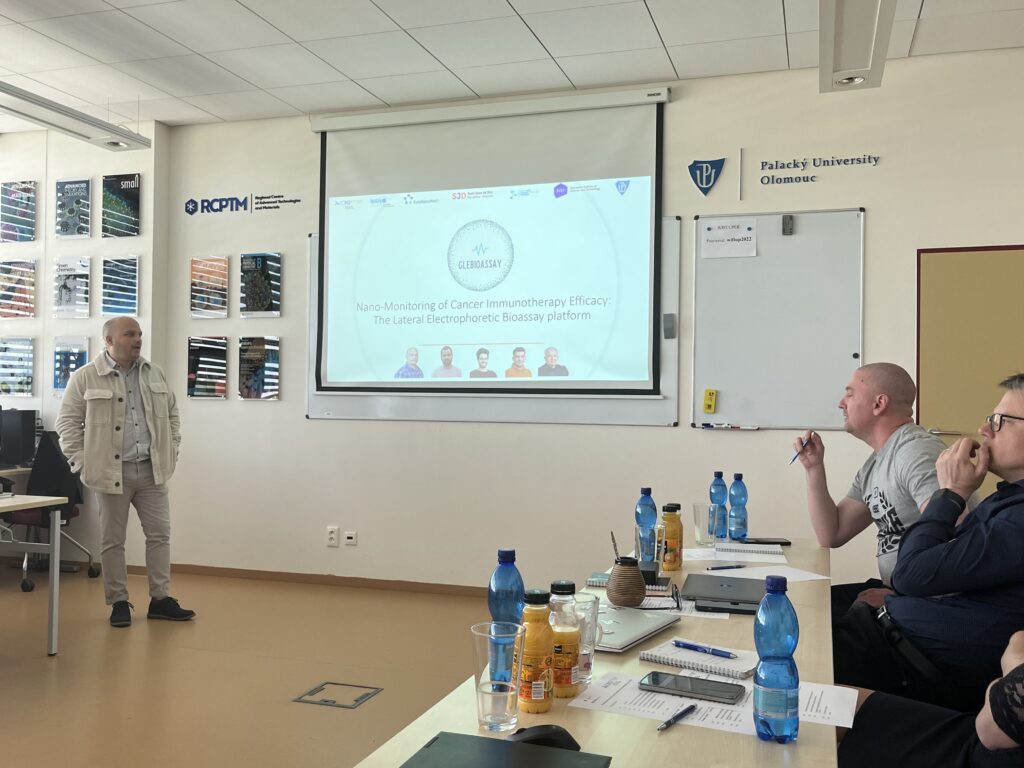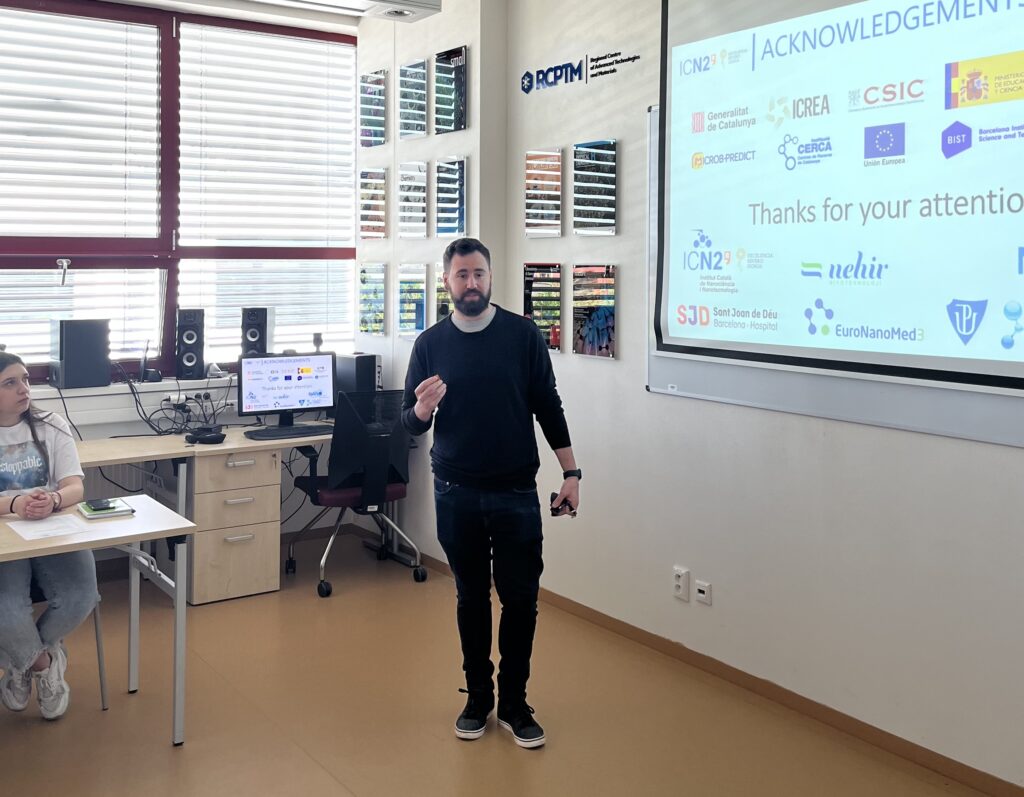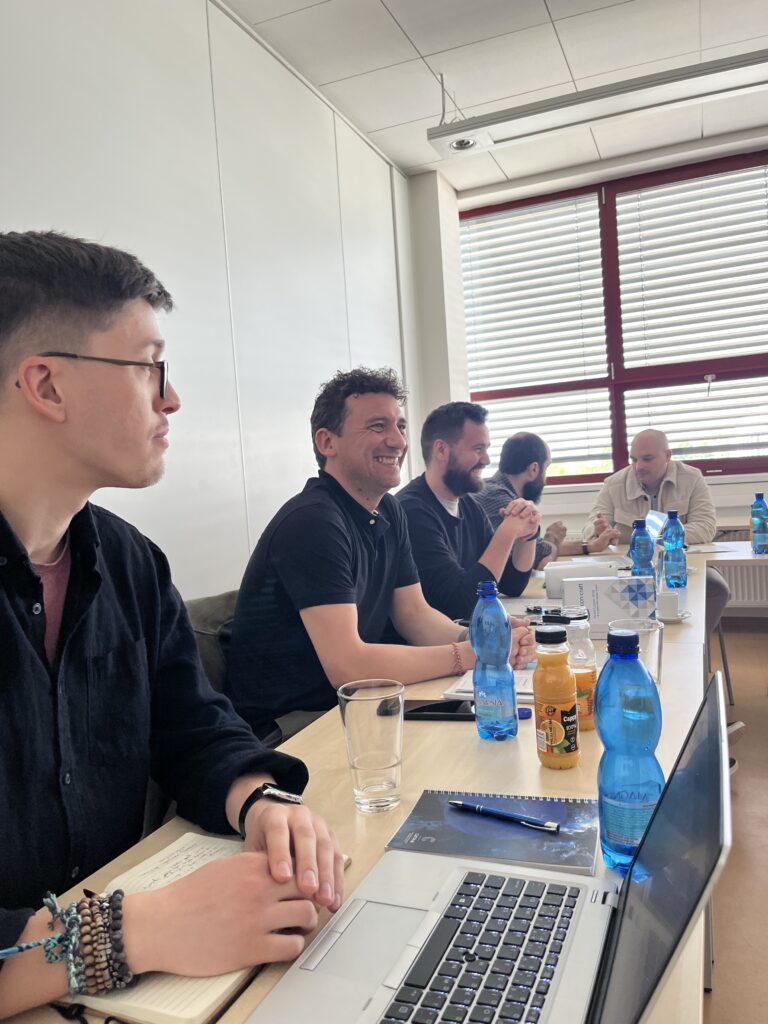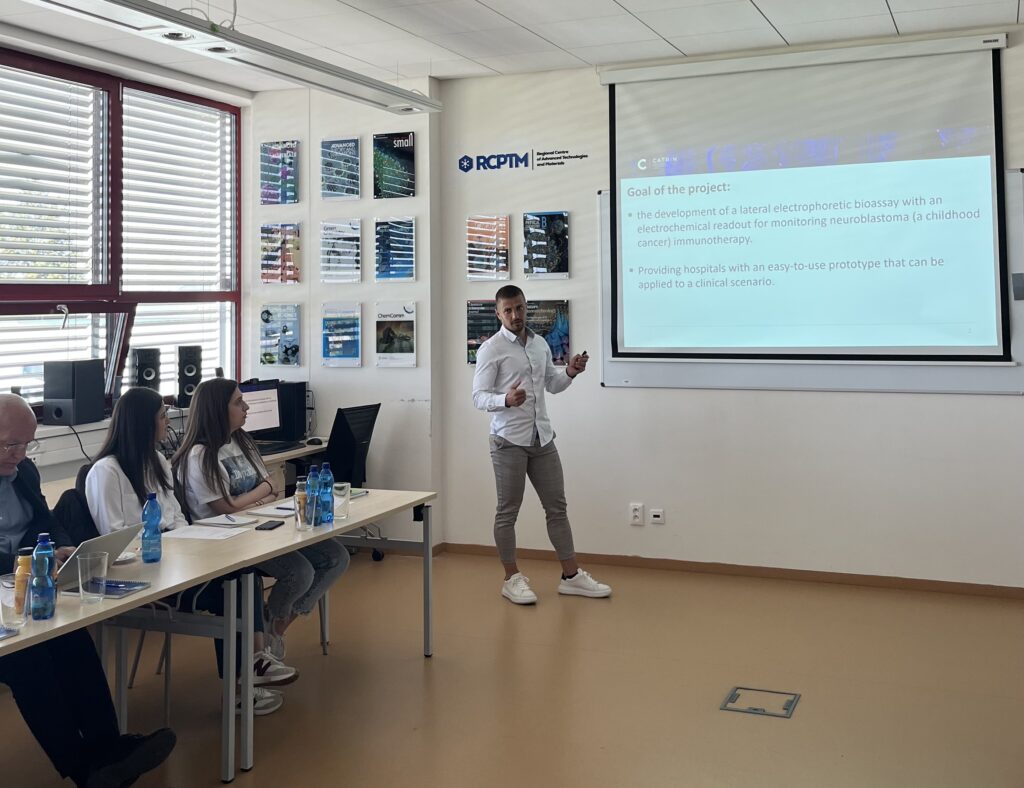Scientists evaluate results in developing a device to help treat neuroblastoma
The results of the first year of the international GLEBBIOASSAY project, which aims to develop a biosensor to monitor the effectiveness of treatment for the children´s cancer – neuroblastoma, have been evaluated by researchers from CATRIN, the Catalan Institute for Nanoscience and Nanotechnology (ICN2) and the Spanish organization Fundació Sant Joan de Déu (FSJD) at a meeting in Olomouc. They set out a research strategy for the next period of the three-year project, which was supported by the Technology Agency of the Czech Republic under the international call EuroNanoMed2021.
“The aim of the meeting was to inform each other about what we are working on, to show the achievements and difficulties so far and to look for solutions together. We need to combine our efforts, our expertise, and our technologies to achieve a result that will be beneficial in the fight against this specific disease, which is very problematic for children,” said the project’s principal investigator Arben Merkoçi from ICN2, which is one of the world leaders in the field of sensor systems.
Neuroblastoma is the most common cancer affecting children in the first year of life, with survival rates for patients remaining below 40 percent. Immunotherapy has made huge advances in treatment in recent years. However, its effectiveness is hampered by the development of so-called HAHA antibodies, which are produced in the human body in response to treatment. Although these can be detected by enzyme-linked immunosorbent assay (ELISA), it is time-consuming, complex and requires trained personnel and expensive laboratory equipment.
“Our goal is to develop a device that can determine the levels of therapeutic agents and antibodies from a patient’s blood sample within minutes during neuroblastoma treatment and determine the optimal treatment strategy based on this. Such a simple sensing device is completely lacking. Compared to the methods used so far, it should be faster, cheaper and without the need for expensive equipment and personnel. This is a general trend in contemporary medicine, where there is a demand for POC analyzers, which allow very fast examination of the patient directly at the point of care,” said Michal Otyepka, the head of the Olomouc research team. According to him, CATRIN scientists contribute to the final result with their knowledge in the development of graphene derivatives, which are used for covalent anchoring of antibodies. It is these materials that could contribute to increasing the sensitivity and efficiency of the sensing system.








Merkoçi described the results of the project so far as very optimistic, although many challenges still await the researchers in tackling the challenging task. The current form of the device was presented by colleagues from Spain at a joint meeting. “We are dealing with three areas that we will combine into an integrated system. In ICN2 we are working on the technology part, which is related to electronics, CATRIN offers new graphene derivatives for electrodes. I think we are at a good stage, and I hope we will achieve further successes as we are also working with a partner that provides us with antibodies and the whole clinical context,” Merkoçi said.
A device that can simultaneously monitor both treatment efficacy and the presence of HAHA antibodies in the body has enormous potential to increase the efficiency of immunological treatment, reduce the risk of side effects and streamline the huge financial costs associated with immunotherapy.

